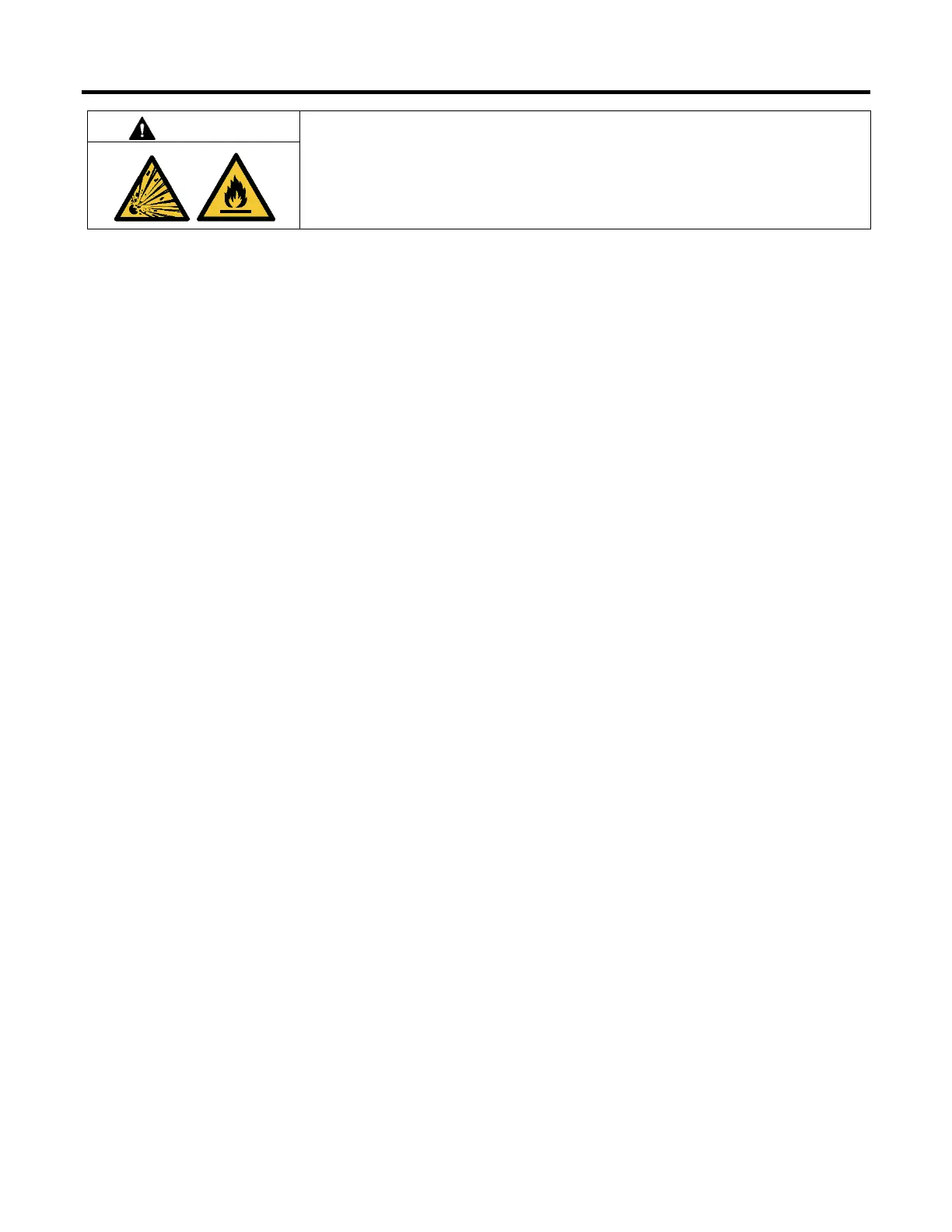The fuel system. Explosive fuel vapors can cause severe injury or death. Vaporized fuels are highly explosive. Use extreme
care when handling and storing fuels. Store fuels in a well-ventilated area away from spark-producing equipment and out of the
reach of children. Never add fuel to the tank while the engine is running because spilled fuel may ignite on contact with hot parts
or from sparks. Do not smoke or permit flames or sparks to occur near sources of spilled fuel or fuel vapors. Keep the fuel lines
and connections tight and in good condition. Do not replace flexible fuel lines with rigid lines. Use flexible sections to avoid fuel
line breakage caused by vibration. Do not operate the generator set in the presence of fuel leaks, fuel accumulation, or sparks.
Repair fuel systems before resuming generator set operation.
Gas fuel leaks. Explosive fuel vapors can cause severe injury or death. Fuel leakage can cause an explosion. Check the
LPG vapor or natural gas fuel system for leakage by using a soap and water solution with the fuel system test pressurized to 6–
8 ounces per square inch (10–14 inches water column). Do not use a soap solution containing either ammonia or chlorine
because both prevent bubble formation. A successful test depends on the ability of the solution to bubble.
Explosive fuel vapors can cause severe injury or death. Take additional precautions when using the following fuels:
Propane (LPG)—Adequate ventilation is mandatory. Because propane is heavier than air, install propane gas detectors low in
a room. Inspect the detectors per the manufacturer’s instructions.
Natural Gas—Adequate ventilation is mandatory. Because natural gas rises, install natural gas detectors high in a room. Inspect
the detectors per the manufacturer’s instructions.
Gas fuel systems operate on either LP vapor or natural gas. Refer to the generator set specification sheet and the Install and
Connect Fuel Supply section for more detailed information on fuel requirements.
Note:
The fuel system installation must comply with applicable national, state and local codes.
3.1 Fuel Lines
Gas lines. Never use fuel piping to ground electrical equipment. The gas supplier is responsible for installation, repair, and
alteration to gas piping.
Use Schedule 40 black-iron pipe for gas piping. Copper tubing may be used if the fuel does not contain hydrogen sulfide or other
ingredients that react chemically with copper.
Line size. Size piping according to the requirements of the equipment. The type of fuel, the distance it must travel from gas
meter/tank to fuel shutoff solenoid, and the amount consumed by the engine must be considered when determining fuel line
pipe size.
In addition to actual fuel consumption, consider the following pressure loss factors:
• Pipe length
• Other appliances on the same fuel supply
• Number of fittings
Measure the pipe length from the primary gas pressure regulator to the pipe connection on the generator set fuel inlet. Add
2.4 m (8 ft.) to the measured length for each 90 degree elbow. Use the pipe size indicated in Figure 20 for the total length of
pipe.
Figure 20 is based on gas pressures of 3.4 kPa (0.5 psi, 13.8 in. water column) or less and a pressure drop of 0.12 kPa (0.018 psi,
0.5 in. water column) with a 0.60 specific gravity and with a normal amount of restriction from fittings. The fuel flow has been
corrected for specific gravity to determine the pipe sizes shown in the table.

